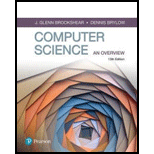
a.
Sequence diagram:
Sequence diagram is a tool that represents the way of interaction of objects to accomplish a work. The objects are labeled with the task to be performed. The arrows show the direction of communication. Objects are shown by rectangles.
Use case diagrams:
Use case diagram is a tool to represent the way of interaction of user with system. Rectangle is used to represent the system. Oval is used for interaction of user and system.
Class diagrams:
Class diagrams not only show associations between different classes but also reveal multiplicities of these associations. Classes are shown by rectangles. Here, relationships of classes are shown by lines.
b.
Sequence diagram:
Sequence diagram is a tool that represents the way of interaction of objects to accomplish a work. The objects are labeled with the task to be performed. The arrows show the direction of communication. Objects are shown by rectangles.
Use case diagrams:
Use case diagram is a tool to represent the way of interaction of user with system. Rectangle is used to represent the system. Oval is used for interaction of user and system.
Class diagrams:
Class diagrams not only show associations between different classes but also reveal multiplicities of these associations. Classes are shown by rectangles. Here, relationships of classes are shown by lines.
c.
Sequence diagram:
Sequence diagram is a tool that represents the way of interaction of objects to accomplish a work. The objects are labeled with the task to be performed. The arrows show the direction of communication. Objects are shown by rectangles.
Use case diagrams:
Use case diagram is a tool to represent the way of interaction of user with system. Rectangle is used to represent the system. Oval is used for interaction of user and system.
Class diagrams:
Class diagrams not only show associations between different classes but also reveal multiplicities of these associations. Classes are shown by rectangles. Here, relationships of classes are shown by lines.
Want to see the full answer?
Check out a sample textbook solution
Chapter 7 Solutions
Computer Science: An Overview (13th Edition) (What's New in Computer Science)
 C++ for Engineers and ScientistsComputer ScienceISBN:9781133187844Author:Bronson, Gary J.Publisher:Course Technology Ptr
C++ for Engineers and ScientistsComputer ScienceISBN:9781133187844Author:Bronson, Gary J.Publisher:Course Technology Ptr Principles of Information Systems (MindTap Course...Computer ScienceISBN:9781285867168Author:Ralph Stair, George ReynoldsPublisher:Cengage Learning
Principles of Information Systems (MindTap Course...Computer ScienceISBN:9781285867168Author:Ralph Stair, George ReynoldsPublisher:Cengage Learning Management Of Information SecurityComputer ScienceISBN:9781337405713Author:WHITMAN, Michael.Publisher:Cengage Learning,
Management Of Information SecurityComputer ScienceISBN:9781337405713Author:WHITMAN, Michael.Publisher:Cengage Learning, Database Systems: Design, Implementation, & Manag...Computer ScienceISBN:9781305627482Author:Carlos Coronel, Steven MorrisPublisher:Cengage Learning
Database Systems: Design, Implementation, & Manag...Computer ScienceISBN:9781305627482Author:Carlos Coronel, Steven MorrisPublisher:Cengage Learning Database Systems: Design, Implementation, & Manag...Computer ScienceISBN:9781285196145Author:Steven, Steven Morris, Carlos Coronel, Carlos, Coronel, Carlos; Morris, Carlos Coronel and Steven Morris, Carlos Coronel; Steven Morris, Steven Morris; Carlos CoronelPublisher:Cengage Learning
Database Systems: Design, Implementation, & Manag...Computer ScienceISBN:9781285196145Author:Steven, Steven Morris, Carlos Coronel, Carlos, Coronel, Carlos; Morris, Carlos Coronel and Steven Morris, Carlos Coronel; Steven Morris, Steven Morris; Carlos CoronelPublisher:Cengage Learning Microsoft Visual C#Computer ScienceISBN:9781337102100Author:Joyce, Farrell.Publisher:Cengage Learning,
Microsoft Visual C#Computer ScienceISBN:9781337102100Author:Joyce, Farrell.Publisher:Cengage Learning,





